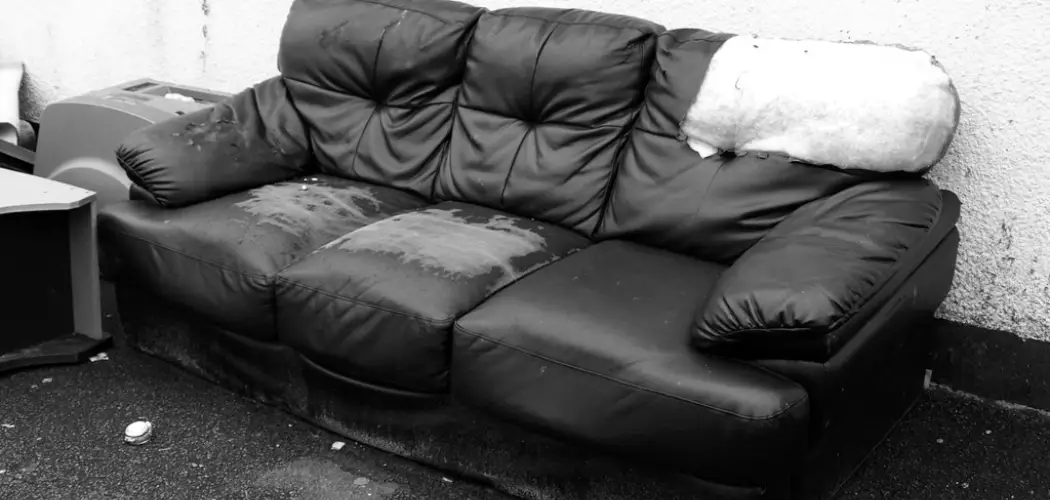Is your leather couch starting to show its age? Are you one of those people with a leather couch that has seen better days? Are the cushions starting to lose shape, and the leather looks a bit worn? There is a solution.
This blog post will teach you how to restore worn leather couch using simple techniques. But, don’t worry; there is a way to restore it to its former glory. All you need is a little bit of leather conditioner and some elbow grease. Follow some simple steps, and your couch will look good as new in no time.
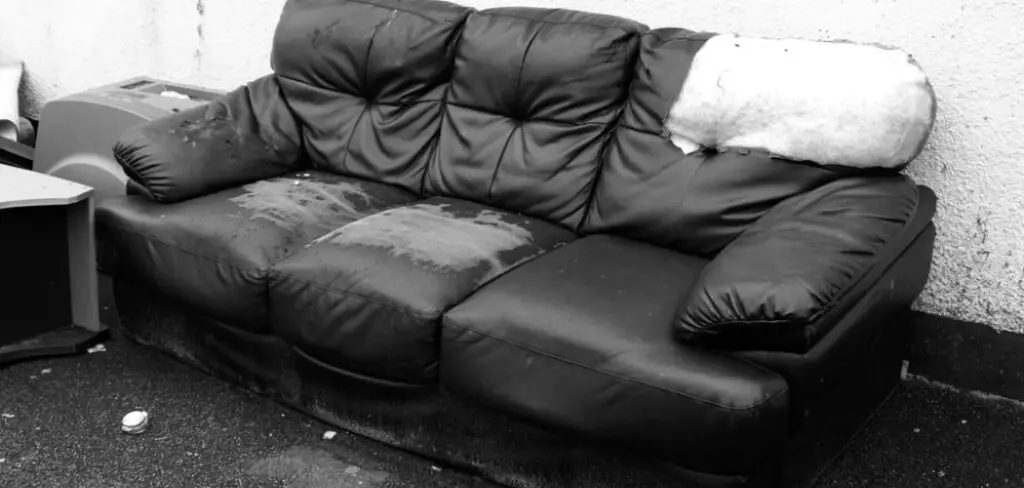
Restoring a worn leather couch is not difficult, but it requires some basic knowledge and supplies. Aniline leather, semi-aniline leather, and protected leather are the most common types of leather. Once you have determined the type of leather your couch is made from, you can begin restoring it. Read on to know more!
Importance Of Knowing How To Restore Worn Leather Couch
Restoring a worn leather couch is important for several reasons.
- Firstly, it can help to extend the life of your couch. Leather is a natural material that can dry out and crack over time. By restoring it, you are helping to keep it hydrated and protected from the elements.
- Secondly, restoring a worn leather couch can also help to improve its appearance. Leather furniture can be expensive, and you want to keep it looking its best. Restoring it can help to bring back its original luster and beauty.
Supplies Needed To Restore Worn Leather Couch
There are a few supplies you will need to restore your worn leather.
- A Leather Cleaner
- A Leather Conditioner
- A Soft Cloth
- A Vacuum Cleaner
- A Leather Protector
Complete Guide On How To Restore Worn Leather Couch
1. Vacuum the Couch to Remove All the Loose Dirt, Dust, and Debris
Use the vacuum cleaner attachment to get into all the nooks and crannies. Dust everywhere. The processing of vacuuming will help to loosen any dirt that is stuck to the leather. It has to be as clean as possible to avoid any further damage.
For this reason, you should avoid using harsh chemicals or cleaners as they can damage the leather. Some basic instruments that you will need for this task are a soft cloth, a vacuum cleaner, and a leather conditioner. It’s particularly important to avoid using any cleaners that contain alcohol, as this will dry out the leather.
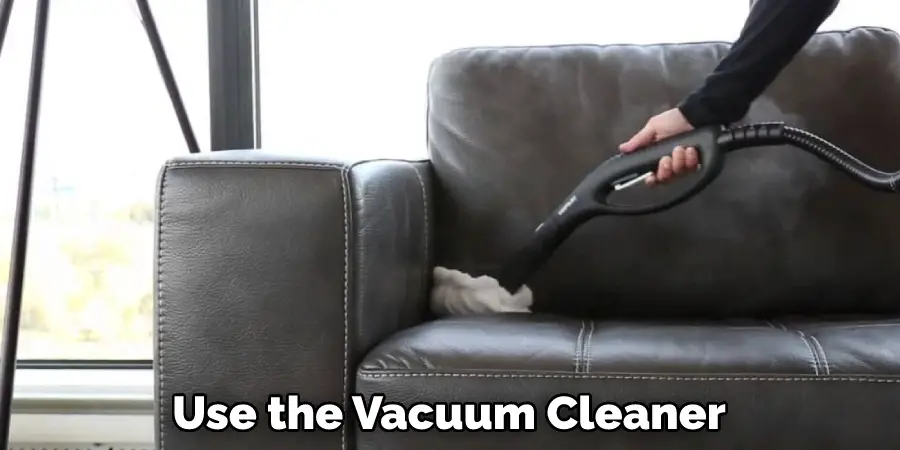
2. Apply a Liberal Amount of Leather Conditioner
Once you have vacuumed the couch, you will need to apply a generous amount of leather conditioner. This will help to restore some of the natural oils that have been lost over time. Again, it’s important to evenly distribute the conditioner over the entire surface of the couch.
You can use a soft cloth to help work it into the leather. Be sure to let the conditioner soak in for at least 30 minutes before proceeding to the next step. The conditioning arrangement will help keep the leather from drying out and cracking.
3. Vacuum Again
After the conditioner has had time to soak in, you will need to vacuum the couch again. This will help remove any excess conditioner the leather has not absorbed. You don’t want to leave any conditioner on the couch’s surface as this can cause damage.
4. Apply a Leather Protector
Once you have vacuumed the couch for a second time, you can apply a leather protector to help keep the dirt and dust from sticking. You can find this at most stores that sell furniture. A leather protector will also help keep your couch looking new for a longer period.
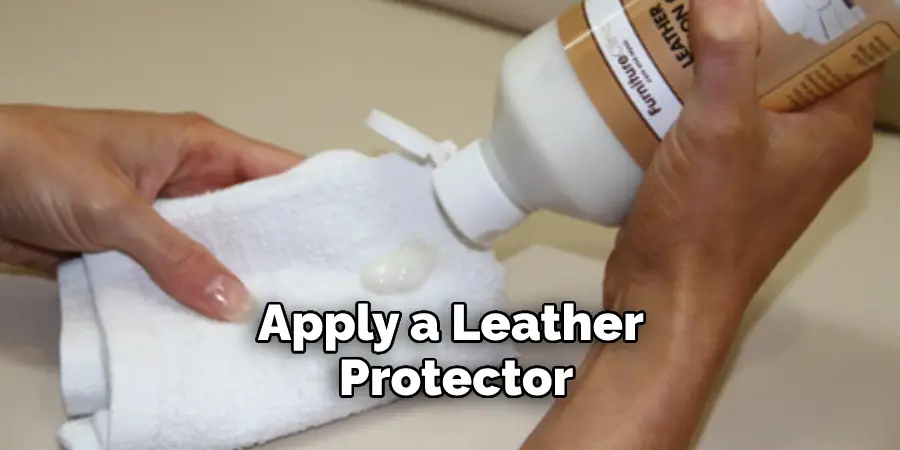
5. Wipe Down the Couch With a Damp Cloth
Use a damp cloth to wipe down the entire couch, removing any dirt or dust you may have missed. Be sure to wring out the cloth well so that it is only slightly damp before cleaning. Saturating the couch with water can damage the leather. Some clothes may also be too abrasive and damage the leather, so test a small area before cleaning the couch.
6. Wipe Up Spills Immediately
Spills are inevitable, but cleaning them up as soon as they happen is important. Use a clean, damp cloth to wipe up any spills. Be sure to get into the crevices and corners, where dirt and grime can accumulate. Spills are generally easy to clean when they’re fresh, so it’s important to act fast. Without this rule, your kitchen will become dirty very quickly.
7. Keep Countertops Clear
Countertops can quickly become cluttered and dirty. To keep them clean, clear off any items that you’re not using. Wipe down the countertops after each use. If you have a lot of small appliances, consider storing them in a cupboard or pantry to keep the countertops clear.
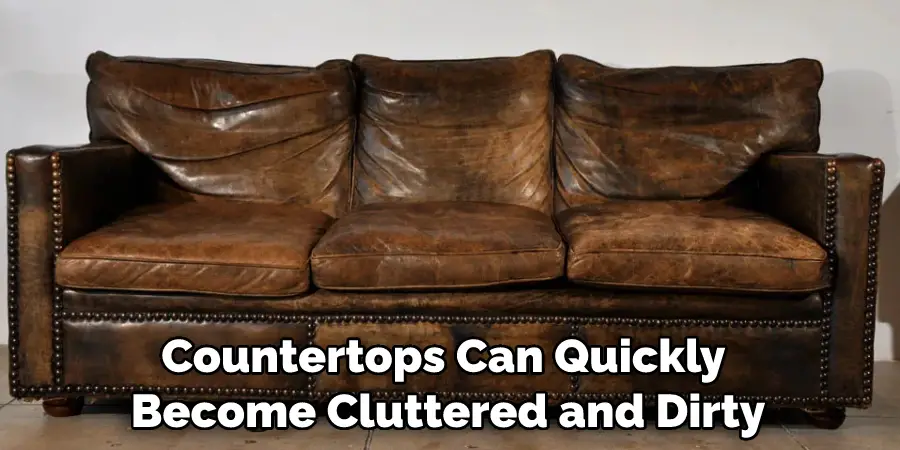
8. Vacuum Regularly
Regular vacuuming is essential for keeping your floors clean and free of dirt and debris. Be sure to vacuum in all directions, using a back-and-forth motion, to pick up as much dirt as possible. Vacuuming also helps to remove any potential allergens from your home. Vacuum slowly and deliberately to make sure you don’t miss any spots.
9. Dust Regularly
Dust accumulates quickly, so it’s important to dust your home regularly. Use a damp cloth or duster to remove dust from surfaces such as tables, chairs, and shelves. Be sure to dust in all directions to remove as much dust as possible.
10. Clean Windows And Mirrors
Windows and mirrors can quickly become covered in fingerprints, smudges, and dust. Wipe them down with a damp cloth or glass cleaner to keep them clean. Be sure to clean both the inside and outside of each window or mirror.
11. Mop Regularly
Moping is another important step in keeping your floors clean. Be sure to use the right type of mop for your flooring. Wet mops are best for tile and linoleum floors, while dry mops are better for hardwood and laminate floors. Mop in a back-and-forth motion to remove as much dirt and debris as possible.
12. Dry The Couch With A Soft Cloth
Once you have wiped down the couch, use a soft cloth to dry it off. Be sure to dry it completely, so no moisture is left on the surface. Allowing the couch to air dry is also an option. Once you have wiped down the couch, use a dry cloth to remove any excess moisture.
Be sure to dry the couch completely to avoid mildew or water damage. Use a clean towel to dry off the sofa, ensuring you get rid of any moisture that may have been left behind.
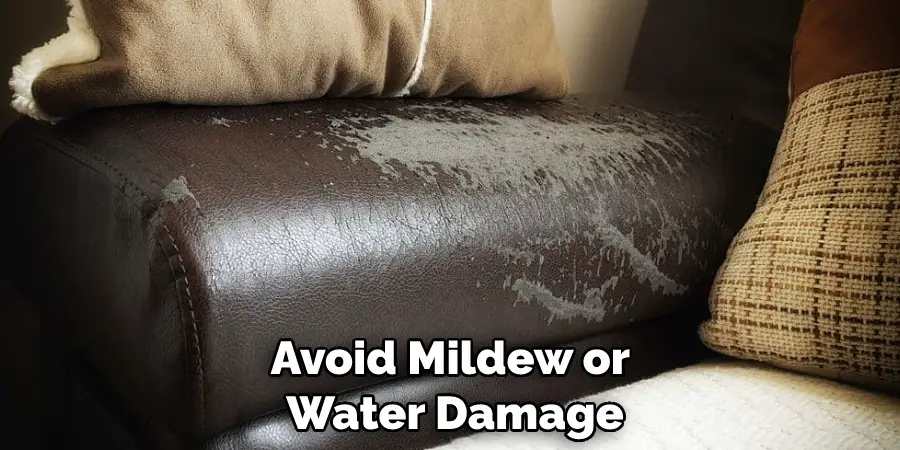
13. Protect Your Couch
In addition to regular cleaning, you can also protect your couch from dirt and stains by using a couch cover or slipcover. Couch covers and slipcovers are available in various colors and styles, so you can find one that fits your couch perfectly. These covers can be easily removed and washed when they become dirty.
Repeat these steps as necessary: You should vacuum and clean your couch at least once a week to keep it looking its best. You may need to clean it more often if you have pets or children. If you notice any spills or stains, clean them up immediately.
What to Do to Rejuvenate Worn Leather?
At first, purchase a leather conditioner and cleaner from a local store or online. Then, Vacuum the couch with a soft brush attachment to remove any dirt, dust, or debris. Next, use the leather cleaner to clean the couch in small sections.
Once the couch is clean, apply the leather conditioner to help restore moisture and protect the leather. Finally, allow the conditioner to soak into the couch for several minutes before wiping off any excess. Repeat these steps as necessary to keep your leather couch looking its best.
What Are the Procedures for Reconditioning an Old Leather Couch?
To recondition an old leather couch, you must purchase a leather conditioner and cleaner. First, vacuum the couch with a soft brush attachment to remove any dirt, dust, or debris. Next, use the leather cleaner on a soft cloth to clean the couch’s surface, and then apply the conditioner. Allow the conditioner to soak the leather for at least 30 minutes before wiping it off.
If your leather couch is worn and needs restoration, there are a few things you can do to bring it back to life. First, you’ll need to purchase a leather conditioner and cleaner. You can find these products at most home improvement stores.
Once you have the conditioner and cleaner, vacuum the couch with a soft brush attachment to remove any dirt, dust, or debris. Next, use the leather cleaner on a soft cloth to clean the couch’s surface. Be sure to follow the directions on the cleaner’s label.
Frequently Asked Questions
How Do You Make Worn Leather Look New?
There are a few things you can do to make worn leather look new again. First, you can clean it with a mild soap and water. If the leather is faded, use a bleach/water solution to brighten it up. Finally, seal the leather with a protective coating like wax or oil.
Can You Rehydrate Old Leather?
Yes, you can rehydrate old leather by soaking it in a water and oil mixture. The water will help to hydrate the leather and the oil will protect it from moisture and damage. You can soak the leather in the mixture for a period of time, or you can simply apply the mixture directly to the leather. Either way, be sure to allow the leather to dry completely before using it.
Does Vaseline Help Restore Leather?
There is limited evidence to support the claim that Vaseline can help restore leather. Some online forums suggest that vaseline can be used to treat dry, cracked, or dead leather, but there is no scientific evidence to support this claim. In fact, some experts caution against using any products on leather without first consulting a professional. Instead, you may be better off using a cream or lotion designed specifically for treating leather surfaces.
What Should You Not Use on Leather?
There are a few items that should not be used on leather, as they can cause damage and potentially result in a lawsuit. Some of the most common items that should not be used on leather include:
1. Petroleum products – These products contain hydrocarbons, which are highly flammable and can cause a fire if applied to leather.
2. Soap – Soap is abrasive and can damage the surface of the leather, causing it to become rough and scabby.
3. Acids – Acids can eat away at the leather, causing it to tear and crack.
4. Alcohol – Alcohol is an irritant and can cause damage to the skin and Leatherman’s warranty may not be valid if it is used on leather.
Conclusion
If you have a worn leather couch, don’t despair! You can restore it to its former glory with elbow grease and the right products. First, vacuum the couch to remove any surface dirt and dust. Then, use a leather cleaner to clean the entire couch.
Once it’s dry, apply a leather conditioner with a soft cloth in circular motions. You can restore it to its former glory with little time and effort. Follow the steps outlined to understand how to restore worn leather couch, and you’ll have a new couch in no time. With these simple steps, your worn leather couch will look new!

